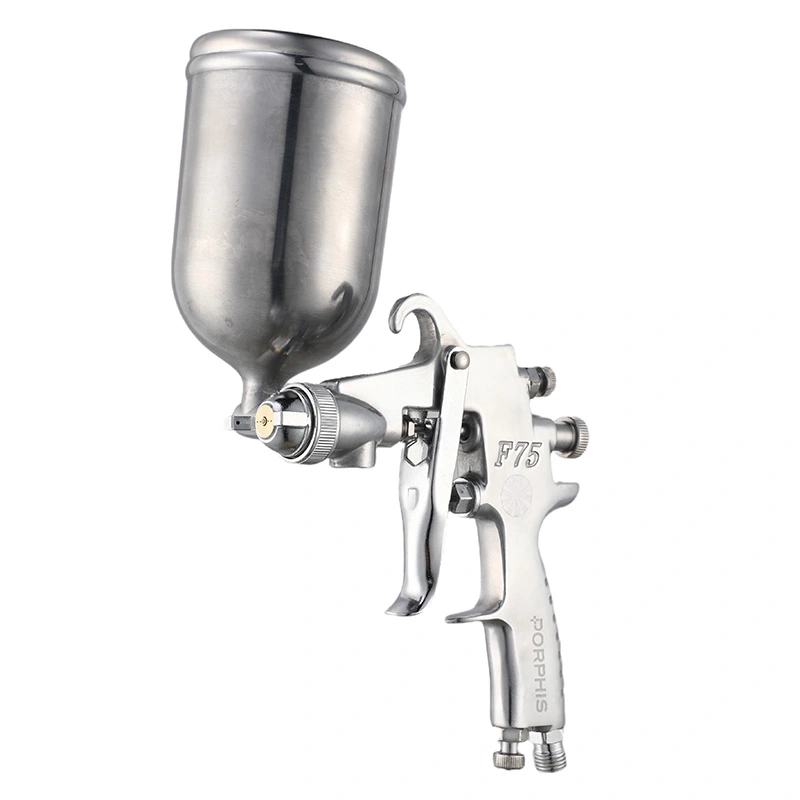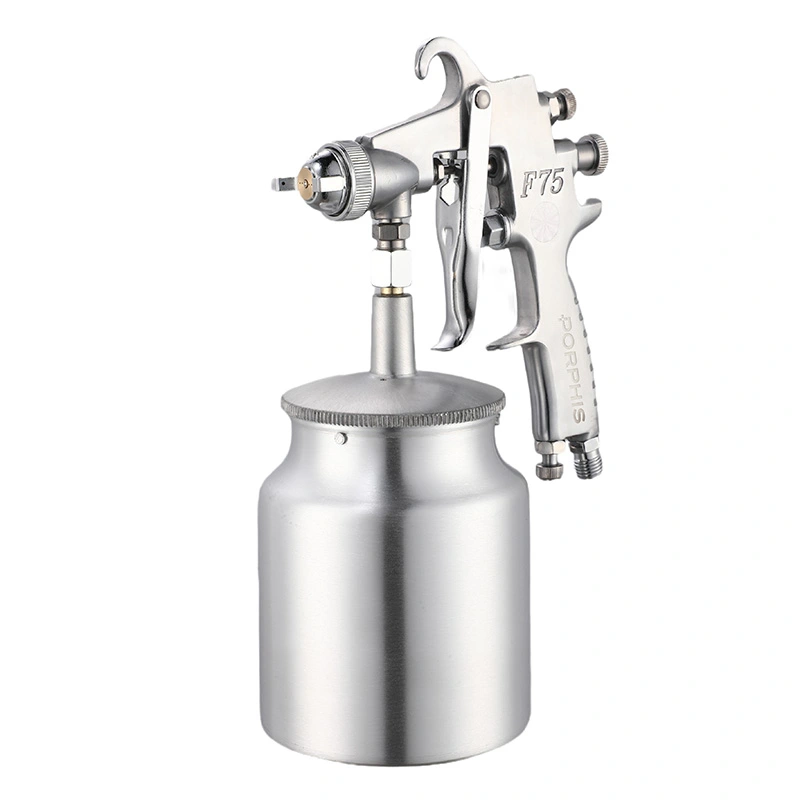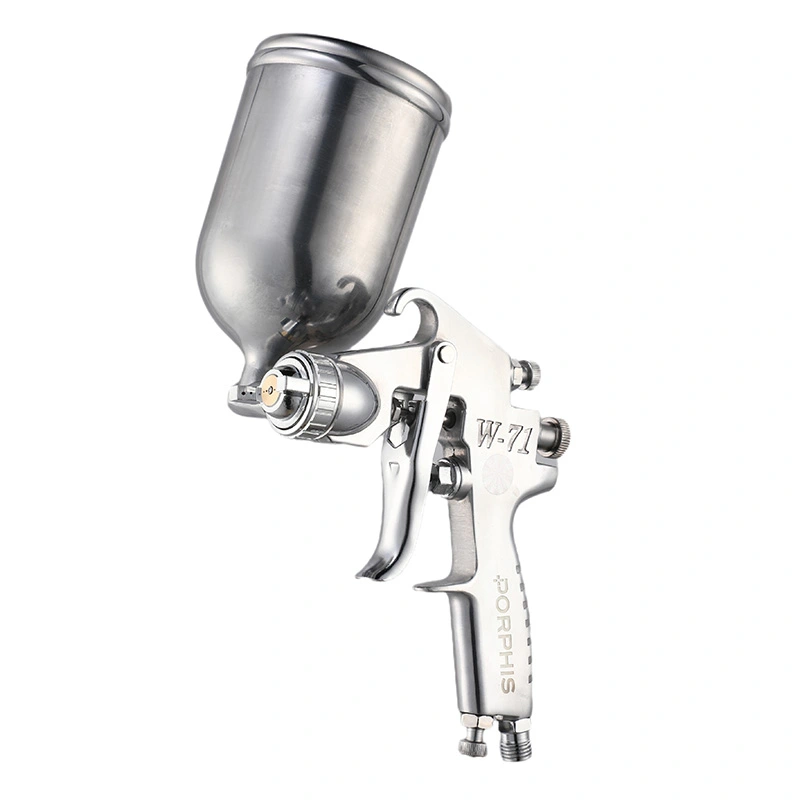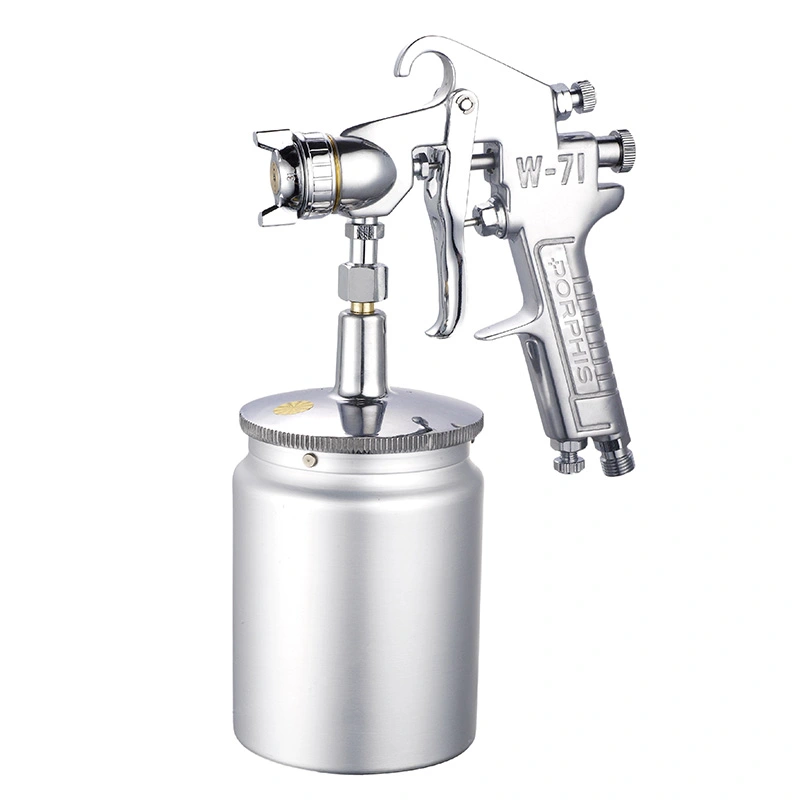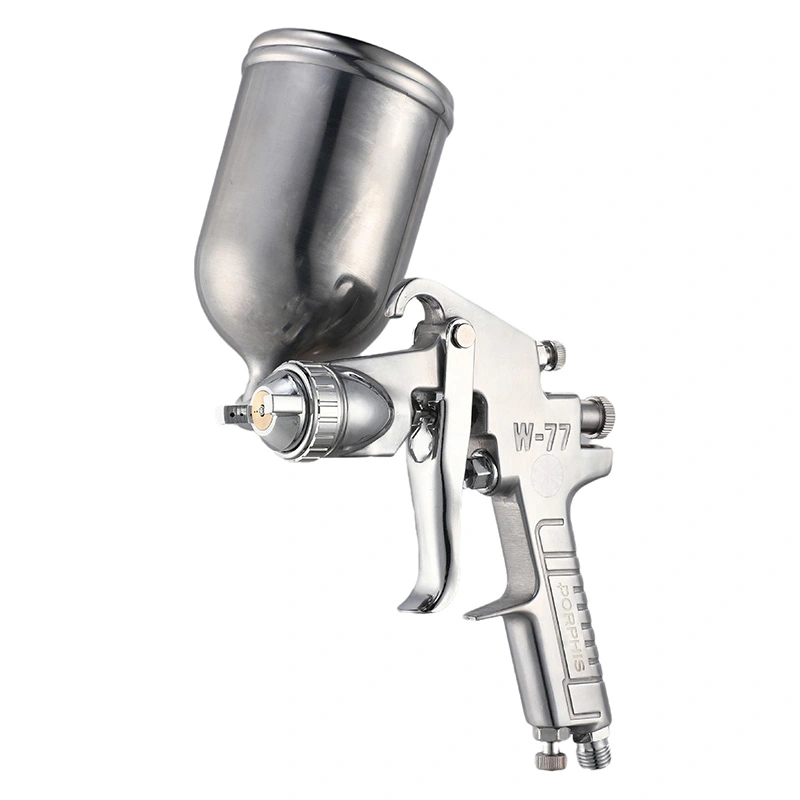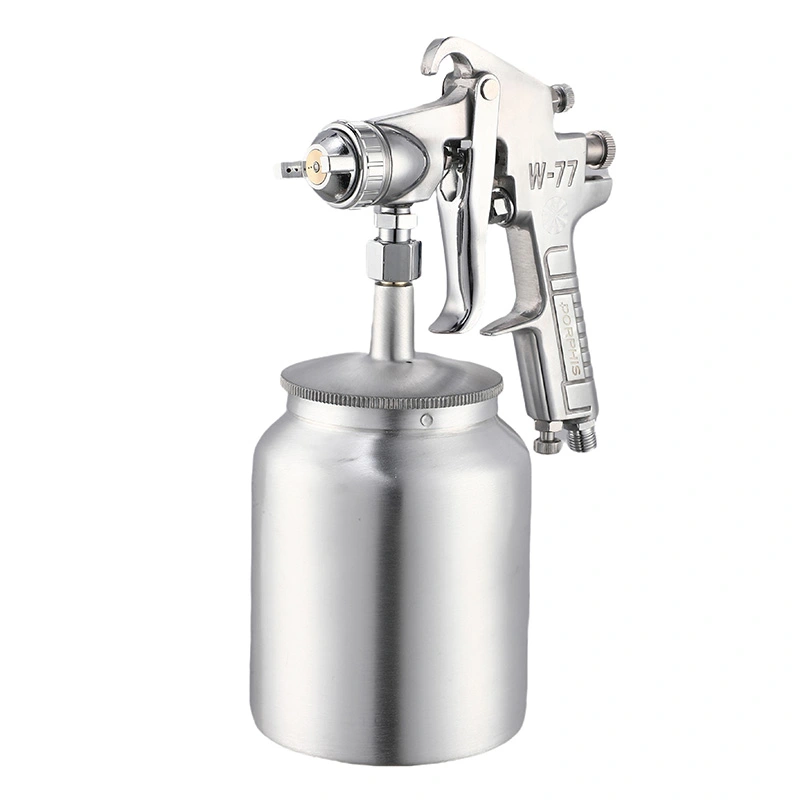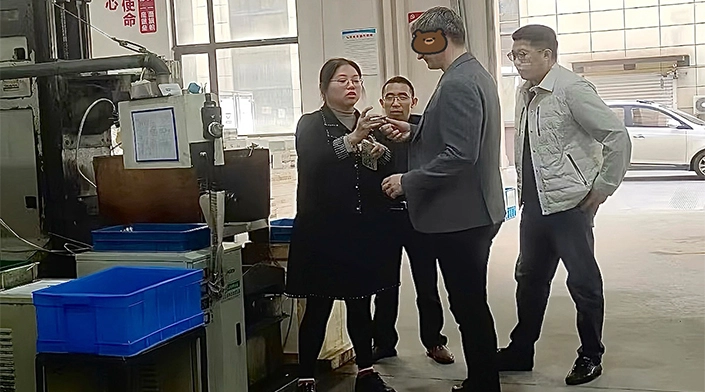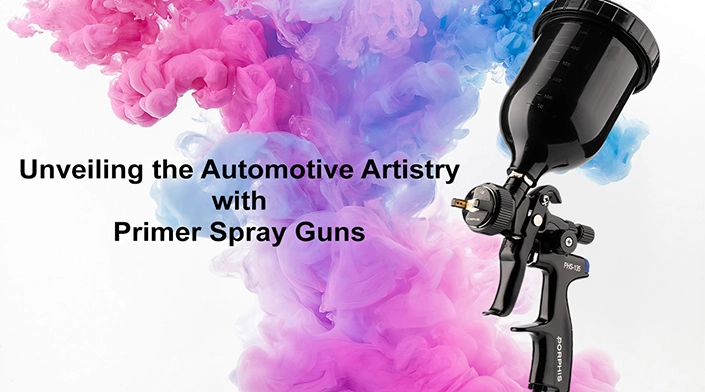

Entry-level industrial spray guns are designed to offer a balance between performance, ease of use, and cost-effectiveness. They are suitable for small to medium-scale industrial applications, such as automotive painting, furniture finishing, and general maintenance tasks. Understanding the working principle of these industrial paint guns can help users optimize their use and achieve better results.

Preparation: Connect the spray gun to an air compressor and load the paint into the fluid cup.
Trigger Activation: Pull the trigger to release fluid and air, starting the spray process.
Atomization: Compressed air breaks the fluid into fine droplets, creating a mist that can be adjusted by nozzle and air cap settings.
Spray Pattern Control: Adjust the air cap, nozzle size, and air pressure to change the spray pattern from narrow to wide.
Application: Move the spray gun across the surface to apply an even coating, controlling distance, speed, and pattern.
Shutdown: Release the trigger to stop fluid and air flow, then clean the gun for future use.
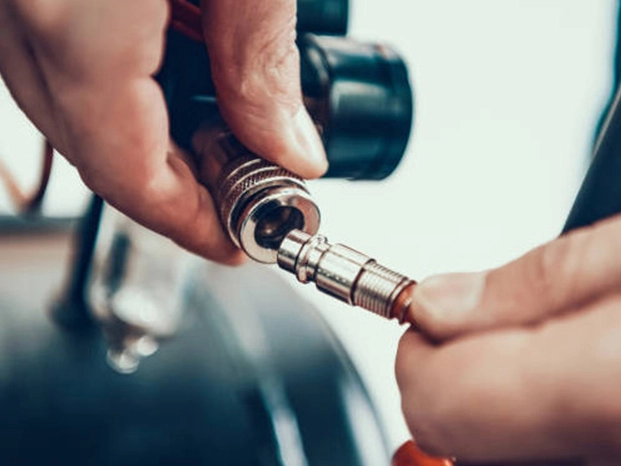
Entry-level industrial spray guns are versatile tools used in various industries for applying coatings, paints, varnishes, and other materials. Their adaptability makes them suitable for a wide range of application scenarios, from small-scale projects to more extensive industrial tasks. Here are some of the most common application scenarios where entry-level industrial spray guns are effectively used:
1. Automotive Refinishing
2. Furniture and Woodworking
3. Metal Fabrication and Coating
4. Home Improvement and DIY Projects
5. Construction and Maintenance
6. Aerospace and Marine Applications
7. Sign Making and Graphics
8. Agricultural and Industrial Equipment
9. Textile and Fabric Applications
10. Crafts and Artistic Projects

